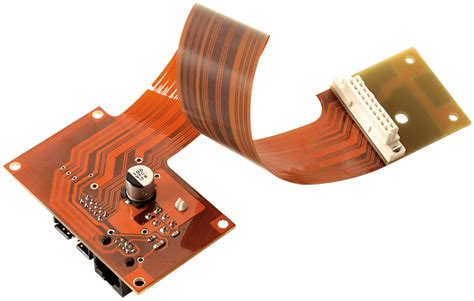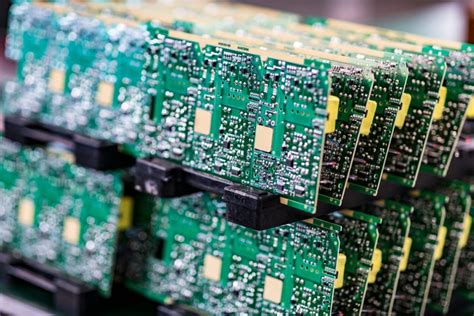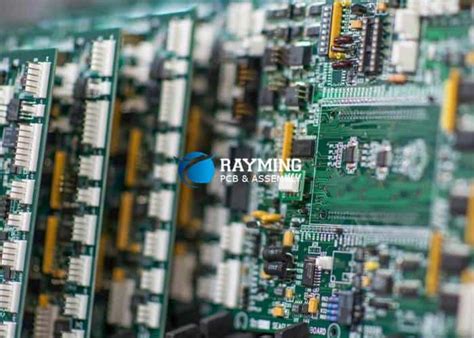Flex pcb cost estimator
Understanding The Basics Of Flex PCB Cost Estimation
Flex PCBs, or flexible printed circuit boards, have become increasingly popular in various industries due to their versatility, lightweight nature, and ability to conform to complex shapes. As the demand for these innovative components grows, understanding the cost estimation process becomes crucial for businesses and engineers alike. Estimating the cost of flex PCBs involves several factors, each contributing to the overall expense. By comprehending these elements, stakeholders can make informed decisions and optimize their designs for cost-effectiveness.
To begin with, the material selection plays a significant role in determining the cost of a flex PCB.
The base material, typically polyimide, is chosen for its flexibility and thermal stability. However, the thickness and type of polyimide can vary, affecting the price. Additionally, the choice of copper weight, which influences the current-carrying capacity, also impacts the cost. Thicker copper layers are more expensive but may be necessary for specific applications. Therefore, balancing material specifications with performance requirements is essential for accurate cost estimation.
Moreover, the complexity of the design is another critical factor.
Flex PCBs can range from simple single-layer designs to intricate multi-layer configurations. As the number of layers increases, so does the manufacturing complexity, leading to higher costs. Furthermore, the inclusion of features such as blind or buried vias, which connect different layers without passing through the entire board, can add to the expense. Designers must carefully consider the necessity of these features and their impact on the overall cost.
In addition to design complexity, the size and shape of the flex PCB influence the cost estimation.
Larger boards require more material and longer production times, thus increasing the expense. Similarly, irregular shapes or designs with intricate cutouts may necessitate specialized manufacturing processes, further driving up costs. By optimizing the layout and minimizing unnecessary complexities, designers can achieve a more cost-effective solution.
Transitioning to the manufacturing process, the choice of production volume significantly affects the cost per unit.
Low-volume production runs often incur higher costs due to setup charges and less efficient use of materials. Conversely, high-volume production can benefit from economies of scale, reducing the cost per unit. Therefore, understanding the intended production volume is vital for accurate cost estimation and planning.
Furthermore, the selection of additional services, such as surface finishes and testing, also contributes to the overall cost.
Surface finishes, like ENIG (Electroless Nickel Immersion Gold) or HASL (Hot Air Solder Leveling), protect the copper traces and ensure reliable soldering. However, each finish has its own cost implications. Similarly, testing services, including electrical testing and inspection, are crucial for ensuring product quality but add to the expense. Balancing these additional services with budget constraints is essential for effective cost management.
Finally, geographical location and supplier selection can influence the cost estimation process.
Manufacturing flex PCBs in regions with lower labor costs may offer financial advantages. However, considerations such as shipping costs, lead times, and communication barriers must also be taken into account. Collaborating with a reliable supplier who understands the specific requirements and constraints can lead to more accurate cost estimations and successful project outcomes.
In conclusion, estimating the cost of flex PCBs involves a comprehensive understanding of various factors, including material selection, design complexity, size and shape, production volume, additional services, and supplier considerations. By carefully evaluating these elements, businesses and engineers can make informed decisions, optimize their designs, and achieve cost-effective solutions that meet their performance requirements.

Key Factors Influencing Flex PCB Cost
When considering the production of flexible printed circuit boards (flex PCBs), understanding the cost implications is crucial for both manufacturers and consumers. Flex PCBs are increasingly popular due to their lightweight, thin, and adaptable nature, which makes them ideal for a variety of applications, from consumer electronics to medical devices. However, several key factors influence the cost of producing these versatile components, and a comprehensive understanding of these elements can aid in effective budgeting and decision-making.
Firstly, the complexity of the design plays a significant role in determining the cost of flex PCBs.
More intricate designs typically require advanced manufacturing techniques and additional processing steps, which can drive up costs. For instance, a design with multiple layers or intricate routing will necessitate more sophisticated equipment and longer production times. Consequently, simplifying the design where possible can lead to substantial cost savings.
In addition to design complexity, the choice of materials is another critical factor.
Flex PCBs are typically made from polyimide, a material known for its flexibility and thermal stability. However, the quality and thickness of the polyimide, as well as the type of copper used for the conductive layers, can vary. Higher-quality materials generally offer better performance and durability but come at a higher price. Therefore, selecting materials that balance cost with performance requirements is essential for optimizing the overall expense.
Moreover, the size and shape of the flex PCB can influence production costs.
Larger boards require more material and may necessitate larger production equipment, both of which can increase costs. Similarly, non-standard shapes or sizes may require custom tooling or additional processing steps, further adding to the expense. Standardizing the size and shape of the boards where feasible can help mitigate these costs.
Another factor to consider is the production volume.
Generally, higher production volumes lead to lower per-unit costs due to economies of scale. Manufacturers can spread the fixed costs of setup and tooling over a larger number of units, reducing the cost per board. Therefore, when planning production, it is beneficial to consider the potential cost advantages of larger production runs.
Furthermore, the choice of manufacturer can significantly impact the cost of flex PCBs.
Different manufacturers may offer varying levels of expertise, equipment, and pricing structures. It is important to select a manufacturer that not only provides competitive pricing but also has a proven track record of quality and reliability. Engaging in thorough research and obtaining multiple quotes can help in identifying the most cost-effective manufacturing partner.
Lastly, additional features such as surface finishes, solder masks, and stiffeners can also affect the cost.
These features can enhance the performance and durability of the flex PCB but may add to the overall expense. Evaluating the necessity of these features in relation to the specific application can help in making cost-effective decisions.
In conclusion, while the cost of flex PCBs is influenced by a variety of factors, understanding these elements can aid in making informed decisions that balance performance with budgetary constraints. By carefully considering design complexity, material selection, size and shape, production volume, manufacturer choice, and additional features, stakeholders can effectively estimate and manage the costs associated with flex PCB production.

How To Use A Flex PCB Cost Estimator Effectively
In the rapidly evolving world of electronics, the demand for flexible printed circuit boards (PCBs) has surged, driven by their versatility and adaptability in various applications. As a result, understanding the cost implications of designing and manufacturing these components has become crucial for engineers and businesses alike. A flex PCB cost estimator serves as an invaluable tool in this context, enabling users to predict expenses accurately and make informed decisions. To use a flex PCB cost estimator effectively, one must first comprehend the key factors that influence the cost of these components.
Initially, it is essential to gather all relevant design specifications before utilizing a cost estimator.
This includes the dimensions of the PCB, the number of layers, and the type of materials to be used. Each of these elements significantly impacts the overall cost. For instance, larger PCBs or those with multiple layers typically incur higher costs due to the increased material and manufacturing complexity. By inputting precise specifications into the estimator, users can obtain a more accurate cost prediction, thereby facilitating better budgeting and planning.
Moreover, understanding the intricacies of material selection is vital when using a flex PCB cost estimator.
The choice of materials not only affects the performance and durability of the PCB but also its cost. Polyimide, for example, is a popular material for flex PCBs due to its excellent thermal stability and flexibility. However, it is more expensive than other materials like polyester. By considering the trade-offs between cost and performance, users can make informed decisions that align with their project requirements and budget constraints.
In addition to material considerations, the complexity of the design plays a pivotal role in determining the cost.
Features such as intricate circuit patterns, fine pitch components, and additional processing steps like via filling or controlled impedance can increase manufacturing costs. When using a flex PCB cost estimator, it is crucial to account for these complexities to avoid underestimating expenses. Simplifying the design where possible can lead to significant cost savings without compromising functionality.
Furthermore, the choice of manufacturing partner can influence the cost estimation process.
Different manufacturers may offer varying pricing structures based on their capabilities, production volumes, and lead times. It is advisable to compare quotes from multiple suppliers to ensure that the cost estimator reflects realistic market conditions. Additionally, establishing a good relationship with a reliable manufacturer can lead to better pricing and service, ultimately benefiting the overall project.
Another important aspect to consider is the impact of production volume on cost.
Generally, higher production volumes result in lower per-unit costs due to economies of scale. When using a flex PCB cost estimator, users should input realistic production quantities to obtain an accurate cost assessment. This approach not only aids in budgeting but also helps in negotiating better terms with manufacturers.
Finally, it is beneficial to regularly update the cost estimator with the latest market data and technological advancements.
The electronics industry is dynamic, with prices and technologies constantly evolving. By keeping the estimator current, users can ensure that their cost predictions remain relevant and accurate, thereby enhancing decision-making processes.
In conclusion, a flex PCB cost estimator is a powerful tool that, when used effectively, can provide valuable insights into the financial aspects of PCB design and manufacturing. By carefully considering design specifications, material choices, design complexities, manufacturing partners, production volumes, and market trends, users can leverage this tool to optimize their projects and achieve cost-effective solutions.

Comparing Flex PCB Cost Estimators: What To Look For
When considering the production of flexible printed circuit boards (PCBs), one of the most crucial steps is accurately estimating the costs involved. Flex PCB cost estimators are invaluable tools in this process, providing insights into potential expenses and helping manufacturers and designers make informed decisions. However, not all cost estimators are created equal, and understanding what to look for in these tools can significantly impact the efficiency and accuracy of your budgeting process.
To begin with, a comprehensive flex PCB cost estimator should offer a detailed breakdown of costs.
This includes material costs, manufacturing processes, and additional services such as testing and assembly. By providing a granular view of each cost component, the estimator allows users to identify areas where savings might be possible or where additional investment may be necessary. For instance, understanding the cost implications of choosing different substrate materials or layer counts can help in making strategic decisions that align with both budgetary constraints and performance requirements.
Moreover, flexibility in input parameters is another critical feature to consider.
A robust cost estimator should accommodate a wide range of design specifications, such as varying sizes, shapes, and layer configurations. This flexibility ensures that the tool can be used for diverse projects, from simple single-layer designs to complex multi-layer configurations. Additionally, the ability to input specific design requirements, such as impedance control or specific trace widths, can further refine the cost estimation, providing a more tailored and accurate financial forecast.
Transitioning to the importance of user-friendliness, it is essential that a flex PCB cost estimator is intuitive and easy to navigate.
A user-friendly interface not only saves time but also reduces the likelihood of errors in data entry, which can lead to inaccurate cost predictions. Clear instructions, logical workflows, and helpful prompts can enhance the user experience, making the tool accessible to both seasoned professionals and those new to PCB design and manufacturing.
Furthermore, the inclusion of real-time data and updates is a significant advantage in any cost estimator.
The electronics industry is dynamic, with material costs and manufacturing technologies constantly evolving. An estimator that integrates real-time data ensures that the cost predictions remain relevant and accurate, reflecting current market conditions. This feature is particularly beneficial in long-term projects where cost fluctuations can have a substantial impact on the overall budget.
In addition to these features, the ability to compare different manufacturing scenarios is a valuable aspect of a flex PCB cost estimator.
By allowing users to simulate various production options, such as different batch sizes or alternative manufacturing locations, the tool can provide insights into the most cost-effective strategies. This comparative analysis can be instrumental in decision-making, enabling users to weigh the pros and cons of each scenario and choose the one that best meets their financial and logistical needs.
In conclusion, selecting the right flex PCB cost estimator involves considering several key features, including detailed cost breakdowns, flexibility in input parameters, user-friendliness, real-time data integration, and comparative analysis capabilities. By focusing on these aspects, manufacturers and designers can ensure that they have a reliable tool that not only aids in accurate cost estimation but also supports strategic decision-making throughout the PCB production process.







